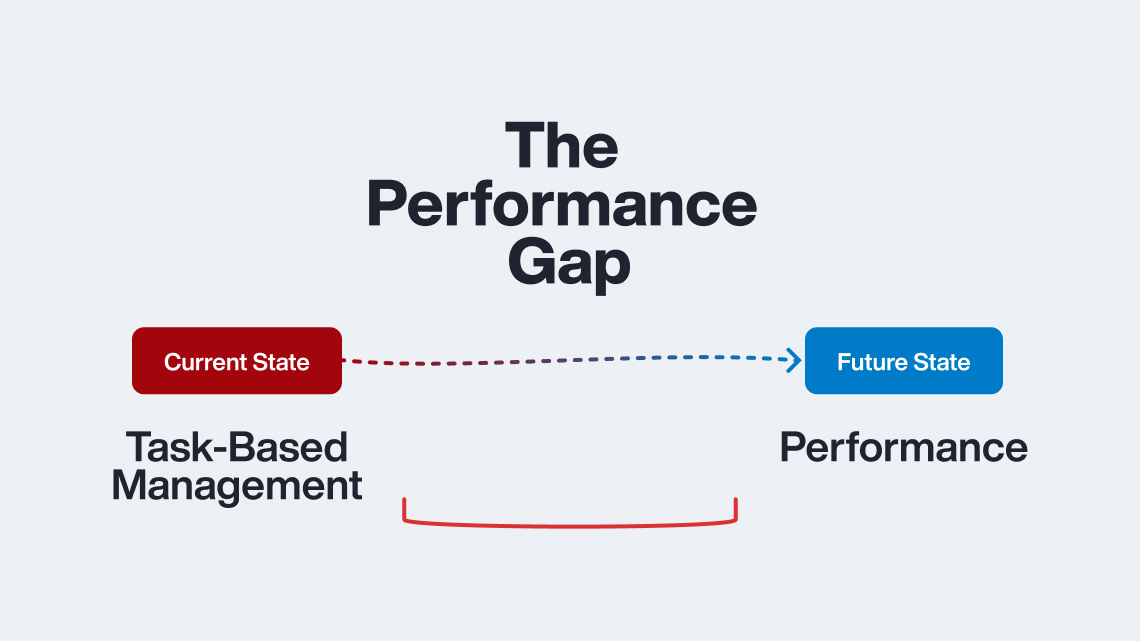Published on April 7th, 2021
By Megan Eales Monroe
So, what’s the best way to excel at virtual leasing? On this episode of The Top Floor, Lisa Trosien (The Apartment Expert) joins us to discuss this topic, as well as specific strategies property managers can use to get more leases signed during this 2021 leasing season and beyond.
We’ve seen an acceleration towards digital-first workflows for many property management teams, and a majority of managers believe virtual showings are here to stay. With that in mind, we attempt to uncover:
- What leasing looks like in 2021
- How to streamline the leasing process to attract more renters
- And more
Listen to The Top Floor to discover lessons learned on managing the transition to virtual leasing as well as real-world strategies that create the best experiences for renters and leasing staff.
Listen now:
Episode Transcript:
Megan: What does the future of leasing look like? Recently a number of factors have affected residential leasing – not the least of which is the pandemic – and its shift towards virtual apartment tours. But to ascribe these changes to Covid and social distancing guidelines wouldn’t capture the whole story. That’s because the virtualization of the leasing process was at play before the pandemic arrived and was accelerated once it landed. Today on The Top Floor, we’re going to explore this topic with the help of one of the leasing world’s most dynamic educators, Lisa Trosien.
Lisa Trosien: My name is Lisa Trosien. I have a company called Apartment Experts, and … I’ve been in the industry for over 25 years. I work on the owner side, the management company side, the vendor side. I consult, I educate, I speak at a lot of conferences.
Lisa Trosien: You know, COVID-19 … I hate to use the word pivot, but that’s the best word, forced everybody to pivot to some techniques that were already out there. People were already doing self-guided tours. People were already doing live virtual tours and virtual tours so those, of course, exploded and became kind of the norm for everybody once COVID really hit and leasing offices shut down.
Lisa Trosien: I think the things that companies did that were really the best … they played to their strengths, a lot of them. Those who did not have the budget to go with a third party for a virtual tour started doing virtual tours on their phone … Those who didn’t have the budget for a self-guided tour basically took an apartment, designated at their self-guided tour apartment, had people come to the office. Some people put the keys in a basket, disinfected and put them in a basket, then stepped back from the basket, people walked up to the basket, took the keys out, did the tour, came back, but the case in the basket. I mean, people really got creative with ways to keep their staff safe and to keep their customers safe.
Megan: Alright, so a few numbers to put the virtual-tour trend into perspective. At AppFolio, our research finds just over 50 percent of renters who signed a lease during the pandemic did so after viewing the apartment wholly or partially by virtual tour. Of those renters, almost 80 percent said their virtual tour was high-quality. And a majority of property managers said virtual showings are here to stay. Putting it another way: the future of leasing is already here.
Lisa Trosien: I think the thing that’s good about it, if we can say anything good came out of COVID … I’m not really saying that but I think the thing that’s good about it is when it forced us to provide alternatives, those alternatives found customers that preferred that way of doing business and will prefer it going forward. If I lived in an apartment community where I had moved in based on a live virtual tour, I really liked that, my lease was up, I’ve decided to move, I go somewhere else and they don’t offer that but that’s my comfort zone, that’s my preference, not going to look there. Go look somewhere else who offers the way for me to do business in the way that I have grown accustomed. I’m totally accustomed now to ordering my groceries and either picking them up and having them put in the back of my car or being dropped at my doorstep. If I find a grocery store that won’t do that anymore, I probably won’t shop there.
Megan: But the same new technology that powers virtual leasing experiences also presents new challenges. As Lisa points out, some teams have struggled to get a handle of virtual mediums.
Lisa Trosien: I have to say I’ve seen a lot of really … Mediocre virtual tours. One of the biggest problems is companies are using their virtual tours as a creativity contest. That’s not what it is and oftentimes, when they do this, they’re violating copyright laws on music … You’re taking the emphasis away from the apartment itself, which is what the customer wants to buy. If the customer is distracted by a bunch of different things, you’re going to lose that.
Lisa Trosien: You can ruin the virtual tour by putting too much into it and, in my opinion, the best virtual tours have a tour guide. They have someone who either is in the video or is in and out of it, maybe introduces it at the beginning and then as a voiceover and “Thanks everybody” at the end.
Lisa Trosien: I think it’s really important that a person introduce a virtual tour. If it’s a live virtual tour, I think you need to be there. You need to introduce yourself, introduce the apartment. In a pre-recorded virtual tour, I think that’s still necessary. I think you need a face at the beginning. People like to put a face with the product.
Lisa Trosien: People need to know what they’re seeing.
Lisa Trosien: The point is, you want to know what the floor plan is. You want to know what the dimensions are. You want to know what the features are. We go from these overly creative ones to these ones that are completely silent, and all you hear are the shoes of the leasing professional as they clip-clop through the apartment and the jingle of bracelets or the jingle of keys. There’s no talk of … “This is our two-bedroom, two-bath Bradford apartment. It’s available on floors one through five. Let’s take a quick look. Here’s the full-size washer and dryer. It’s a Maytag, you’re going to love it. Let’s go into the master bedroom. It’s 15 by 12.” You don’t even have to fill it with a ton of voiceover but just some stuff so you know what you’re looking at.
Lisa Trosien: The other problem that we have is the self-guided tours. Self-guided tours are great but, again, I’ve been experiencing a lot of these firsthand. You go into the apartments and there’s nothing in there. You don’t know how high the countertops are, you don’t know what the dimensions in the room are, you don’t know anything. There’s no signage whatsoever to tell you what you’re seeing. Does this apartment face east, west, north or south? I don’t know.
Lisa Trosien: We need to arm our customers with information. You can’t give them too much information. Ideally, when they walk out of that self-guided tour, there’s a QR code on the back of the door that they can snap that takes them right to the application page.
Lisa Trosien: That sends a message about quality. If you do a self-guided tour and they can’t get into the apartment, that’s not good. You want to make sure that everything is well done. If you do a self-guided tour, you’re not checking it between tours and the cleanliness becomes an issue … You have to raise the bar with your quality level and your delivery of your services because that expectation is now going to be there. There are some companies that are knocking it out of the park with their quality and, if they’re in your market, you are that standard to which you are going to be compared, so you’ve got to make sure that you’re on top of all that.
Lisa Trosien: I think people gave you a pass at the beginning of the pandemic for kind of slapping stuff together and saying “This is new.” Now, if you go out there, your hand’s all jiggly on your camera and you do a terrible job, people aren’t going to cut you any slack anymore because they’ve seen really good virtual tours.
Megan: Naturally, there are obstacles to bringing new technology into an existing process – not the least of which are creating buy in and then training teams to use the tech. Here, Lisa recalls a few of the challenges she’s seen other teams run into.
Lisa Trosien: You need to look at your onboarding of the property at the property level. They need to feel comfortable with the technology and they need to feel like it’s a necessity because, oftentimes, what happens is the sale of the technology is made with the chief technology officer and maybe the VP of marketing. Very bright, very well-qualified people to make this decision, right? Then it comes down to the regional level, and the regionals get an email where they get a meeting and it says “We’re just going to start using this now, so set your teams up for their onboarding.” Then, you set your teams up for the onboarding with your industry partner who’s brought in the technology. If the onboarding isn’t effective, isn’t good, doesn’t sell the site teams, it’s not going to work.
Lisa Trosien: I will tell you having been on-site, if you try to force a technology on me as a site-level staff person and you don’t onboard me correctly, sell me on how great it’s going to be and help me make my job easier, I’m not going to use it. I’m not, because I’ve got 50 other things to do. I’ve got to talk to residents about the exterminator coming, getting their sofa delivered, getting an apartment re-keyed and scheduling the painters. If I don’t have a package delivery service, I’ve got to be getting packages for people. That’s all in the space of 10 minutes, all right? I’ve got a lot going on, so if you can’t sell me on why your technology is great and teach me how to use it in a seamless manner, it’s going to fail.
Lisa Trosien: You need to say “Okay, here’s a problem you’re having, here’s a pain point you’ve got and here’s how we’re going to fix it. We’re going to make your job easier.”
Lisa Trosien: I’ll give you a perfect example. I was working at a property one day, helping them out. They had three different software systems. None of the software systems played well together so, when they had a prospect come out, they had to enter that prospect three separate times. They got frustrated, quit doing it and started entering their traffic in a spiral notebook. You know what? I can’t blame them. Dual entry is terrible, but triple entry? Oh my goodness.
Lisa Trosien: When we’re creating things and making people’s lives easier, we really have to teach them how to do it and let them know why it’s going to make their jobs easier and make them more marketable down the road as a property management professional. Can you tell I feel just a little bit passionate about this?
Megan: Covid pushed many leasing teams to get creative and root out inefficiencies in their processes, such as the example Lisa observed: triple data entry. So many teams were crunched for time pre-pandemic, and that pressure hasn’t gone away. Other leaders in the property management industry share this sentiment, including Donna Block, the President of Lux Communities, a North Dakota-based firm that oversees more than two thousand investment properties in the Upper Midwest.
Donna: Prior to the pandemic, I would always talk with my leasing consultants and tell the story of when I was a leasing consultant, back in the day, I got 31 leases in one month. That was my highest month of new leases. Everyone always was trying to beat that.
Donna: Well, not until the pandemic did one of my leasing consultants beat that metric. A hundred percent attribute it to the efficiencies that were created. They didn’t have to go out to every single building and open the units. There were self shows, there were the virtual tours. They didn’t have to sit down in front of someone and read through a full two-page lease and go over everything. They sent it out electronically and the applicant was able to sit in the comfort of their own home and read through the lease agreement and ask questions later.
Megan: Adding to how technology makes the leasing process more efficient is JC Castillo, a principal at California-based Multifamily Property Group. Here, he explains how automation streamlines processes.
JC Castillo: I believe that the future of leasing properties is going to be a very automated and artificially intelligent way to lease the units with revenue management. When I say revenue management, I mean a lot more than just, hey, let me tell you how much you’re going to pay for this unit based on a one-year term. I mean, artificial intelligence that takes into account what’s the number of renewals that we’ve got, what’s the leasing velocity, how long is the unit been vacant. Those sorts of technology are going to be very important to the residents seeing the flexibility, but also to the ownership groups and the property management companies in terms of driving great revenue at the properties. I believe that is what’s really critical here.
Megan: Building relationships is at the heart of leasing agents’ jobs. And this objective can get complicated when they’re performing virtual leasing tours. Nonetheless, building a good rapport with clients remains essential. Here’s Lisa, again.
Lisa Trosien: Well, leasing agents have to be able to find out a lot of really personal information about their customers, and their customers have to trust them because we’re going to see their criminal background check, we’re going to see their credit report. After they move in, we’re probably going to pick up their mail. We know these people intimately, so there has to be a trust bond there because, if there isn’t, it’s not going to work. We really have to be able to get those people to trust us.
Lisa Trosien: The vast majority of customers don’t believe that companies have their best interests at heart. Let’s think about that. They don’t. The company has the company’s best interest at heart. We have to win over those customers. We have to create that trust bond with them and we have to get them to feel good about us.
Lisa Trosien: I don’t believe there’s a one size fits all answer to marketing. In some markets, Craigslist works amazingly well. In other markets, all you get from Craigslist are scammers. You have to look at your market and say “Okay, what works in this market? What doesn’t work? What hasn’t been tried? Maybe Craigslist hasn’t worked in the past but, if we tweak it, will it work?” … You have to constantly be doing that to be trying different things because it may work. I don’t ever want to hear [inaudible 00:29:03] “We tried that. It doesn’t work.” Try it again, but do it a little differently.
Megan: With another leasing season almost upon us, what does the future of leasing look like? And what are some of the trends that will define it?
Lisa Trosien: It’s a leasing season like no other. We’ve never come out of a pandemic into a leasing season, so treat it like your previous ones, but keep watching the consumer trends that are out there as it regards COVID.
Lisa Trosien: I coined this phrase, and I use it in all of my education, called pandemic priorities. These are the new renter priorities based on what they went through with COVID-19 and being quarantined. Rooftop decks … searches for rooftop decks are up over 90%. Pantries … people want pantries to store all their toilet paper. They’re still hoarding toilet paper, believe it or not. … They want balconies and patios, they want outdoor spaces, they want socially-distanced amenities, they want work from home options.
Lisa Trosien: Don’t let your floor plans limit you in what you call a work from home scenario. You can stick a corner desk anywhere, or a little writing desk anywhere, so people can work or learn from home. The new question that leasing professionals need to ask when they’re talking to a prospect is “Will anyone living in the apartment be working or learning from home?” That’s a huge new priority. They want to know about Internet speed, they want to know about five bars even more than they used to.
Lisa Trosien: There’s a whole list of things that have now become super important because people had to do without them. My oldest daughter lives in an apartment now that has a huge balcony, and she moved from an apartment right before the pandemic hit with a Juliet balcony. She said, “Mom, I never would’ve lasted in my old apartment with this Juliet balcony. I am on my balcony all the time because I need to get outdoors.” It’s made a huge difference for her.
Lisa Trosien: In most of the urban markets right now, they’re concession crazy, absolutely concession crazy. I hate to admit it but you have to do something to keep up with that because you have shoppers that are just in there for the price, you have mortgage payments to make, you have owners to satisfy and things like that.
Lisa Trosien: I like to be a little bit more creative than that. I like to look at the situation and say “How can I make this work better? How can I do something that isn’t quite so much as giving away free rounds?” I’ve done situations where … There’s an old expression called look and lease. “If you look and lease that day, you’re going to get X.” That tends to be pretty effective. I’ve had clients who have dangled a gift card of significant value in front of a customer and said, “You know, if you lease today, you will get this gift card upon moving.” That’s a pretty good incentive for that day.
Lisa Trosien: I also had a property that I worked on with Kate Good … Kate and I double-teamed on a property in San Antonio, and one of the things that we did is we captured the work at home market, work from home. The property had a number of two-bedroom apartments. We took the two bedrooms and we split them in half. Let’s just say for the sake of argument there were 200 two-bedrooms. We took a hundred of those two-bedrooms, we gave that floor plan a new name because all the floor plans were named and, instead of calling it a one-bedroom with a den or a two-bedroom, we called it a one-bedroom home office. We created a separate model for that one. We even selected where in the building the one-bedroom home offices would go. We’d pick the least desirable two-bedroom, two-bath locations and we picked those for the home offices. If you rented that, the owner furnished that bedroom with office furniture. That was very effective. It set us apart from everybody else in the market, it was something different.
Megan: So, what’s Lisa’s advice for those who’re rethinking their leasing process?
Lisa Trosien: You need to take the rule book for leasing, throw it out the window, start over again and say “You know what? You don’t have to do it that way. We’re going to do it virtually. Let’s make it different, let’s make it better, but let’s not use music that we’re supposed to pay a royalty for and let’s not put people in costumes dancing through the rooms.” Remember, the star of the video is the apartment, and I think we forget that sometimes.
Megan: Huge thanks to those who spoke with us, Donna Block, JC Castillo and the Apartment Expert herself, Lisa Trosein. Lisa, where can our listeners find you?
Lisa Trosien: You can find me on Facebook, LinkedIn, Instagram and Twitter.
Megan: Search for “The Apartment Expert” on social media to follow Lisa. And finally, a big thanks to you, our listeners, for tuning in.











Comments by Megan Eales Monroe
Consistency Is Key: 5 Ways to Help Property Management Teams Work More Effectively and Efficiently
Hi there Ryan! We definitely have solutions that make sense ...
How Will Rent Control Impact Property Management Companies in 2020?
Hi Frank - the Consumer Price Index (CPI) is used as a ...
What is AI, and How is it Transforming the Real Estate Industry?
Hi there, Kim! The price depends on your business' ...
There’s a Better Way to Get Work Done: How to Maximize Team Performance through Experience
Hi Amanda, We'd be happy to provide you with more info! ...